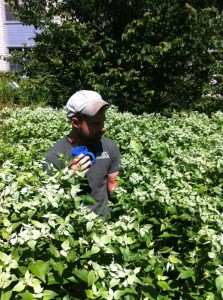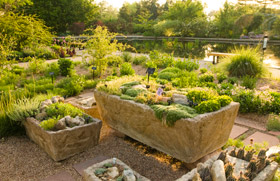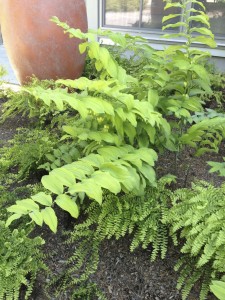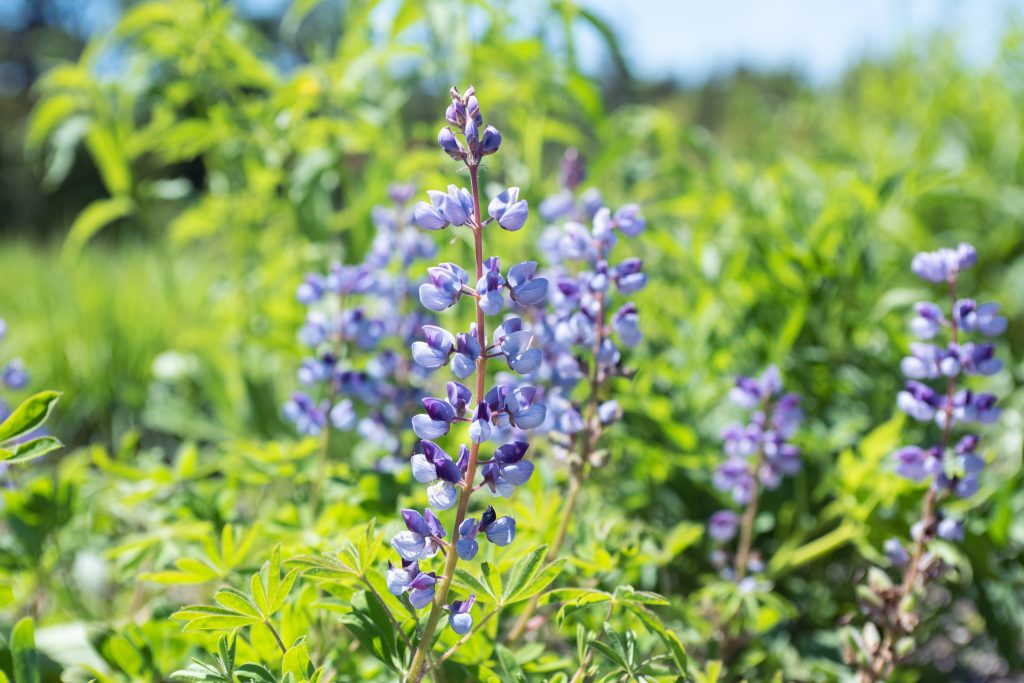This week, fellow intern Kristin Neill and I had the pleasure of working with one of our most artistic staff members, Diane Walden. Diane is the staff horticulturist responsible for the Burpee Kitchen Garden, the native plantings around the Bosarge Family Education Center, some of the flower arrangements in the Visitor Center and Kitchen Garden Café, and the majority of the potted containers throughout our grounds. In addition to assisting her throughout her typical everyday tasks, we took on Diane’s assignment to take complete responsibility for keeping the floral arrangements fresh and maintained so that she would have more time to focus on the Burpee Kitchen Garden. Within a couple of days, Kristin and I began to understand just how difficult it is to design numerous flower displays multiple times a week and quickly came back to Diane for advice.
Diane proclaims that the best way to create consistently fresh new displays is through searching for inspiration from others. She affirms that by considering how others use different combinations of flowers in their displays you can use the fresh perspective to explore groupings you never would have imagined in your own arrangements. One excellent source she uses is Flowers Rediscovered by Madderlake.
Undoubtedly because I was raised in Colorado, a state teeming with public lands, I developed a strong appreciation for native landscapes in my early teens; and as a result I have always aligned myself with more sustainable gardening techniques such as natural landscaping, or the use of native plants indigenous to the geographic area of the garden.
A native plant is often defined as a species that has grown in a given area prior to European settlement. It is important to use native plants in your landscape because they contribute to the biodiversity of your ecosystem and support local wildlife. Native plants are not only beneficial for local wildlife, they are also less costly to maintain if placed appropriately. Because these plants have spent thousands of years adapting to your local climate, they require less water and fertilizer and are more likely to survive than are their introduced counterparts.
Though native plants generally require fewer resources, support local wildlife, and are typically considered lower maintenance, they must be placed in the right location in your yard. When selecting a native plant for your garden, make sure to place it in a setting where it will receive similar sunlight, moisture and soil conditions to where it is found in nature. The University of Maine Extension is a great resource for determining plants to use and plants to avoid when gardening to conserve Maine’s native landscape.
I find it odd how many gardeners, Diane included, find natural landscaping boring in comparison to exotic plantings. While I realize that native gardens are often considered less vibrant, I truly believe that if designed correctly, with ample variety, a native garden can be just as striking as any other.
-Montana Williams, Pearson Horticulture Intern (8/2/13)





